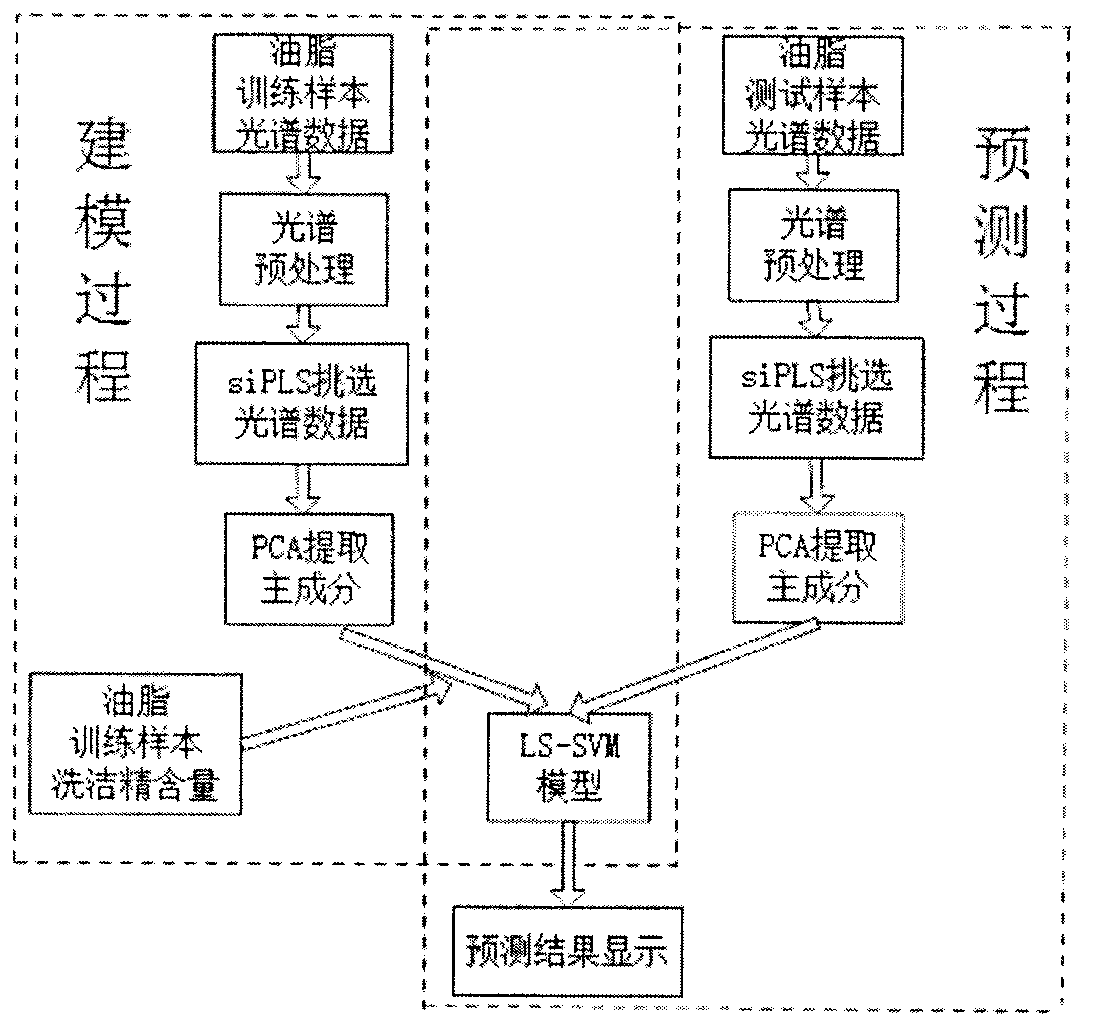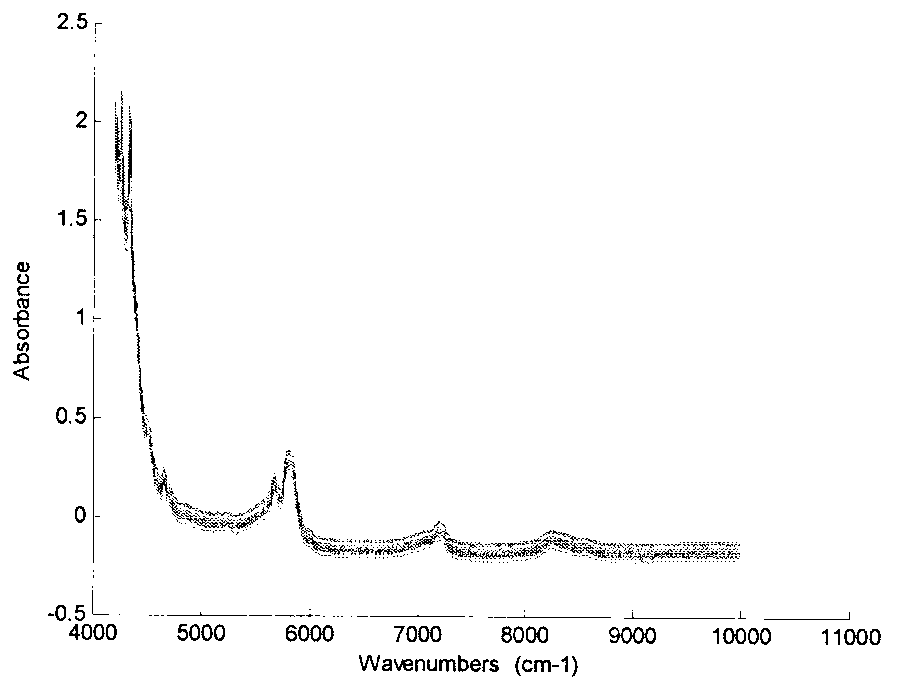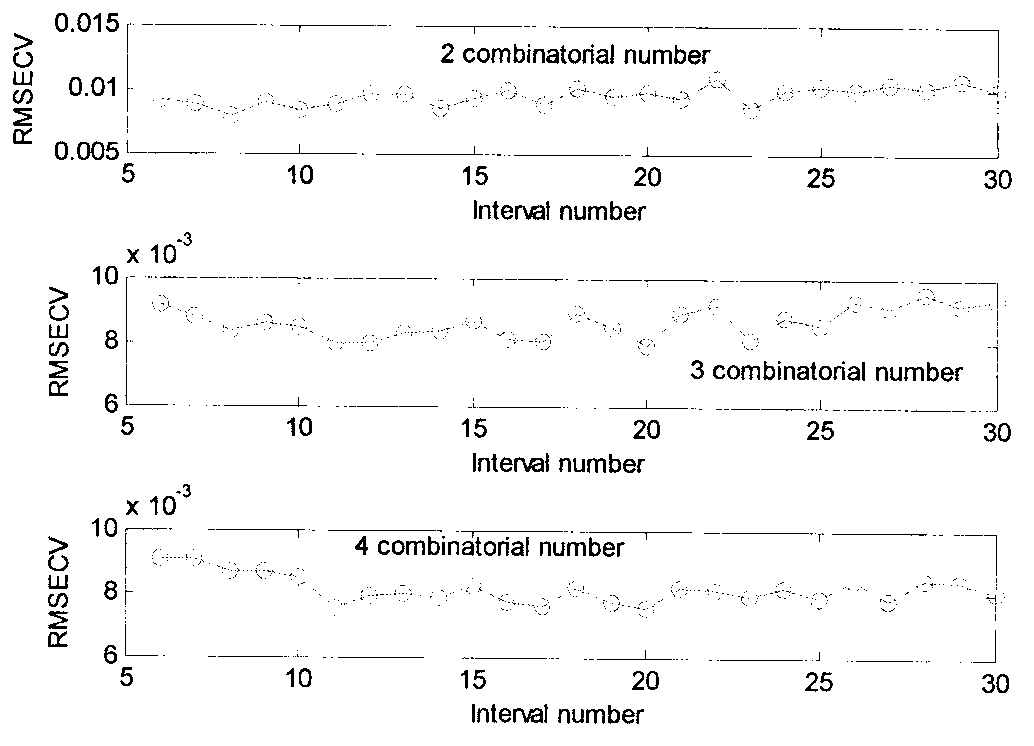Hogwash oil identification method based on near infrared reflectance spectroscopy
A near-infrared spectroscopy, stagnant oil technology, applied in the field of stagnant oil identification, can solve the problems of inability to form an automatic detection process, complex process, time-consuming, etc., and achieve the effects of reducing computational complexity, eliminating interference factors, and improving prediction accuracy.
- Summary
- Abstract
- Description
- Claims
- Application Information
AI Technical Summary
Problems solved by technology
Method used
Image
Examples
Embodiment Construction
[0058] In the following, the present invention will be further described and explained in conjunction with the accompanying drawings and examples, so that those skilled in the art can better understand the present invention.
[0059] figure 1 The overall plan diagram for the determination of detergent content in hogwash oil is given. Firstly, the collected spectra are preprocessed by combining multivariate scattering correction processing and Karl Norris smoothing processing to eliminate the influence of interference factors, and then use the joint interval minimum The wavelength screening was performed by the square method (siPLS), and the selected wavelengths were: [275:411], [549:685], [686:822], [1234:1370]. Finally, the LS-SVM method based on the radial basis kernel function is used to establish the prediction model, in which the regularization parameter C=34.26, and the kernel parameter σ 2 = 11.84.
[0060] In order to achieve high-precision measurement and avoid unnece...
PUM
 Login to View More
Login to View More Abstract
Description
Claims
Application Information
 Login to View More
Login to View More - R&D
- Intellectual Property
- Life Sciences
- Materials
- Tech Scout
- Unparalleled Data Quality
- Higher Quality Content
- 60% Fewer Hallucinations
Browse by: Latest US Patents, China's latest patents, Technical Efficacy Thesaurus, Application Domain, Technology Topic, Popular Technical Reports.
© 2025 PatSnap. All rights reserved.Legal|Privacy policy|Modern Slavery Act Transparency Statement|Sitemap|About US| Contact US: help@patsnap.com



